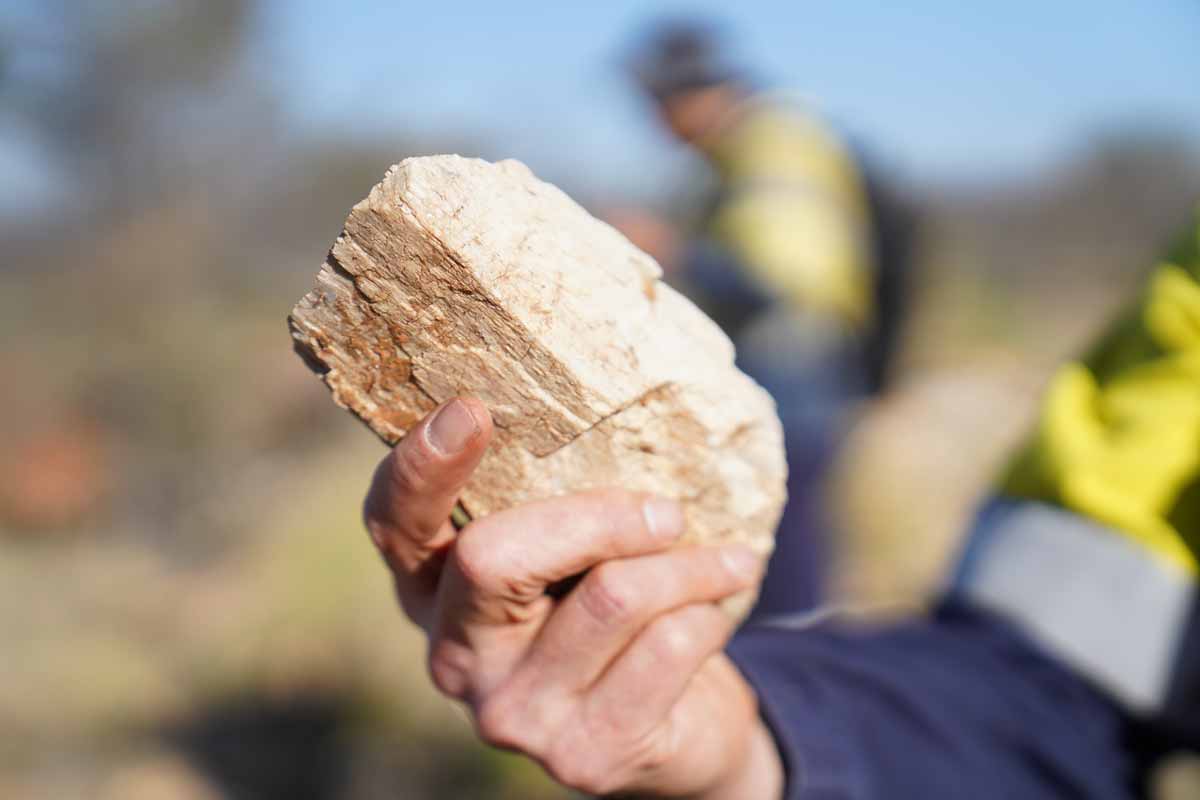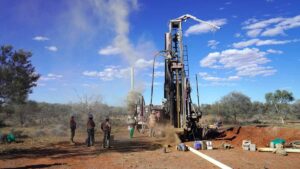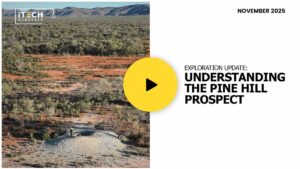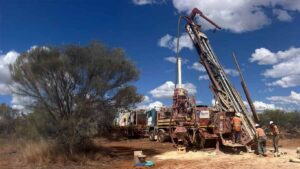
SUMMARY
Reynolds Range Lithium Potential
• During the Quarter, iTech Minerals discovered a spodumene bearing pegmatite at Reynolds Range, NT
• Significant rock chip results include:
- 6.50 % Li2O
- 7.08 % Li2O
- 6.50 % Li2O
- 8.24 % Li2O*
- 8.24 % Li2O*
- 7.90 % Li2O
- 8.22 % Li2O*
- 7.23 % Li2O
• With over 60km of outcropping pegmatites interpreted on satellite imagery this has the potential to be a previously unrecognised lithium province
• The GMF1 pegmatite was sampled over a ~90m section and has a mapped length of over 250m before disappearing under thin sandy cover to the north and south
• QXRD analysis of two lithium bearing samples, from the GMF1 Pegmatite, confirm a spodumene content of 84% and 83%
Reynolds Range Copper-Gold-Silver-Antimony Potential
• Significant rock chip results received during the quarter:
- 18.2% Cu, 285.0 g/t Ag and 1.0 g/t Au at Scimitar
- 14.2% Cu, 1,490.0g/t Ag and 3.3g/t Au at Scimitar
- 16.4% Cu, 57.2 g/t Ag and 1.0 g/t Au at Scimitar
- 950.0 g/t Ag, 1.0% Sb and 5.3% Pb at Scimitar
- 19.5% Cu, 3.15g/t Au and 2,090.0g/t Ag at Reward
- 19.6% Cu and 12.2g/t Au and 785.0g/t Ag at Reward
- 13.8% Cu and 19.4g/t Ag at Reward
- 29.1% Cu, 0.83g/t Au and 27.4g/t Ag at Stanley
- 10.3% Cu and 0.2g/t Au at Stanley
- 55g/t Au and 2.4% Cu at Pine Hill
- 8.2g/t Au at Trout 3
- 15.4g/t Au at Cutlass
- 12.6% Sb, 1.0g/t Au, 90g/t Ag and 4.0% Pb at Falchion
- 182g/t Au at Sabre
• Ongoing fieldwork, including mapping and sampling is allowing iTech to develop a model for regional polymetallic copper-gold-silver mineralisation across the Reynolds Range Project
• Regionally significant electromagnetic anomalies at both the Scimitar and Reward Prospect align with the mineralised horizon and have the potential to be caused by massive sulphides associated with VMS mineralisation
WANT TO GET INVESTOR UPDATES DELIVERED TO YOUR INBOX?
SIGN UP TO THE iTECH NEWSLETTER
MORE NEWS FROM THE INVESTOR CENTRE

Drilling Completed At Reynolds Range Gold-Antimony Prospects

AGM Presentation (2025)

Exploration Update: Understanding the Pine Hill Gold Prospect

